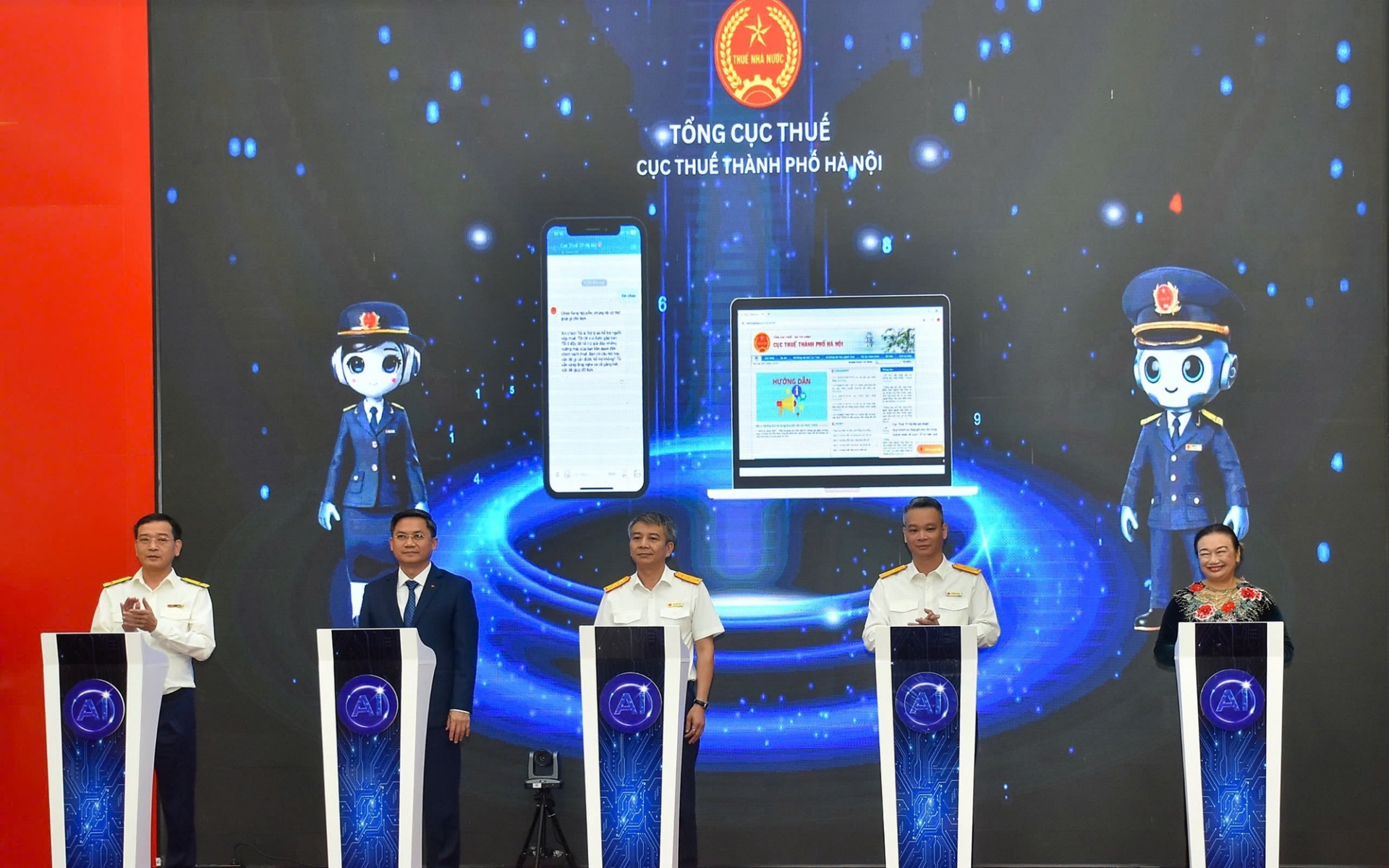Banks embrace their digital destiny
 |
| Under pressure from customer demand, banks look to anticipate the future Photo: Le Toan |
The cutting edge of trends
Transferring money or checking your outstanding balance has never ever been easier. Ho Chi Minh City-based resident Nguyen Tan Nhat Quang, a Citi account holder, can now access his bank account through a smartphone. No passwords are required; his fingerprint is the only key required to open the door to his financial world.
In 2016, Citi introduced Touch ID, a technology that uses customers’ fingerprints for verification when conducting business on their smartphones. According to Citi, its customers no longer need to memorise username and password information – they simply use their fingerprint to reduce fraud and enhance usability.
“A year ago, I was absolutely fine typing my password, now … the app doesn’t have Touch ID, I’d get very impatient with questions: Why do I have to type my password? Why does this app not have a Touch ID?” Natasha Ansell, managing director and Citi country officer for Vietnam, spoke very keenly of the cutting-edge transformation in the banking sector.
She cited statistics showing that 1.8 billion people – out of over seven billion people around the world today – are millennial. They will make up 75 per cent of the global workforce by 2025, and as the majority of the population, they will be earning money, spending money, and driving the global economy.
“73 per cent of them are found to be more excited about financial offerings from digital, rather than physical branches, and 38 per cent of them do not visit physical branches for any banking activity,” she noted.
Citi is one of the first banks, globally and regionally, driving the technological transformation in the banking industry. For Ansell of Citi, it is always exciting to be part of such a transformation, to not only respond to change, but to drive it.
Like Touch ID, Voice Biometrics was also rolled out by Citi to its Vietnamese market last year, providing its customers with ease and peace of mind. Where Touch ID uses fingerprints, Voice Biometrics uses unique, pre-recorded, voiceprints.
“… on the scale of security, voice is the hardest thing to replicate, virtually impossible,” said Ansell.
Twins or even triplets will not be able to impersonate each other, as the system will automatically detect the difference, she said.
Changing gears in the fast lane
For Nirukt Sapru, CEO of Standard Chartered Bank Vietnam, it is evident that not only the global banking landscape, but also the landscape in Vietnam, is changing rapidly, with technology coming to the forefront of attention.
“On one hand, as a service that is fundamentally ‘digitisable’, banks can reduce costs, improve speed and service quality, and put power into the hands of their customers through the innovative deployment of technology,” Sapru told VIR. “On the other hand, customers want safe and convenient banking services anytime, anywhere.”
These forces are causing a technological banking race, and according to Sapru, it is equally good for banks, customers, and the continuing development of the entire banking sector.
“A key element that technology brings to the forefront is the ability to integrate seamlessly across products and services, which give customers a more feature rich and frictionless banking experience,” he added.
Citi’s Ansell meanwhile agreed that this transformation of the banking sector comes as part of the technological revolution, as banks search to increase efficiency and respond to the existing demands of banking customers. Regulators have facilitated these changes as well, acting as the third force – in addition to the banks and customers – that influences contemporary banking.
According to Ansell, the State Bank of Vietnam (SBV) has set up its strategic objectives to 2020, attempting to boost e-commerce, diversify payment channels and methods, and reach an annual POS (point of sale) volume of $200 million. In addition, the monetary authority also aims to increase e-payments and reduce total cash transactions to less than 10 per cent.
“Those objectives include increasing access to the banking system for 70 per cent of individuals above the age of 15. It’s an ambitious target. We can’t achieve those targets through bank branches alone,” she stressed.
Money in the air
According to Ansell, there was a period roughly five ago when the banking sector got very excited about virtual branches built around state-of-the-art technology. These branches would basically have no service staff or tellers. Rather, they would use flat-screen displays where bank customers could access their account information, make financial projections, and, if needed, connect by video call to a bank representative.
“Back then, we thought it was going to be the future, and the demand of the consumers. Today, the concept of virtual branches is moving on to ecosystems. It is moving so really prominently to where the branch is actually the smart phone in your hand,” Ansell said in an interview with VIR.
The question now is whether virtual banking branches can fulfil the SBV’s targets and how they will fit into Vietnam’s present banking scene?
Techcombank head of Transaction Banking Phan Thanh Son said that some countries can go very fast with branchless banking. But for others, the adoption of virtual branches is slower, as consumers prefer to go to physical branches – even though the frequency and nature of the transactions could change.
“With the help of technology, customers can interact with banks without actually going to the banks, but the need for physical branches still persists,” Son noted.
“For Vietnam, I think it would be a gradual process, as the banking penetration in Vietnam is still relatively lower than other countries in the region,” he said. “The need for physical branches will be there. However, more and more transactions will be done virtually by the customers, so the role and function of the branch might change.”
“The concept of a virtual branch is moving on to be present in the ecosystems of the clientele,” said Ansell of Citi. “They use smart phones – so that’s where we need to be. This convenience is expected from us. And frankly, the same is happening with card technology, where clients can pay using an app on their phone instead of a piece of plastic [bank card].”
For a bank customer like Quang, certain banking services that can be done remotely via a smartphone are much appreciated, saving him time and hassle. However, a trip to a physical branch may still be compulsory for more complicated banking services like applying for a home loan.
|
Nirukt Sapru CEO of Standard Chartered Bank Vietnam
Local banks have become aware of this and are making appropriate investments in the digital banking space. We expect that to continue in the future. Vietnam offers great opportunities for the development of digital banking given its young and tech-savvy population. The internet and mobile phone penetration is very high, averaging 50 per cent, and keeps growing every year. Additionally, the SBV is supporting innovation and has defined a clear development agenda to move from a cash-based to a digital economy. Each bank needs to have their own strategy to make the best use of these advantages with regards to their competitive strengths, the target markets and segments they cater to, and the technologies they’ve adopted to cover those segments. |
|
NATASHA Ansell Managing director and Citi country officer for Vietnam
With regards to the SBV’s ambitious target, I’m a big believer in setting ambitious targets. If you don’t set yourself an ambitious goal, you will never find out what you’re capable of. Who knows how the next four or five years will continue to evolve. The pace of change is becoming much faster. What used to take five to 10 years now takes a year. So I would call the SBV’s objectives ambitious, but I wouldn’t call them unachievable. I believe the vision is absolutely right, and I think it’s absolutely worth going after it. You shoot for the moon, even if you miss, you’ll land among the stars: so let’s shoot for the moon, and we’ll land somewhere in a very good place. Even if cash transactions are not reduced to 10 per cent of the total, it’ll be somewhere meaningful from that perspective. |
|
Phan Thanh Son Head of Transaction Banking at Techcombank
Furthermore, innovation should not be limited to information technology, but should also be applied to improve business processes and business models. This is evident in the rapid growth of consumer financing and mortgage loan products over the last couple of years. With the adoption of the internet and social media, consumers can be constantly updated on the latest financial products and can access information about banking products and services at any time. Therefore, banks need to stay ahead to meet these demands by focusing on innovation and better technology. |
Cybercrimes
Conventional banking has changed dramatically and at a rapid pace. Bank clients now expect more from their banks and have welcomed digitalised banking for the sake of convenience. They will, however, pay particular attention to security risks, such as cybercrime, when transactions are carried out online.
“We cannot say whether or not this is safer than a traditional bank, but this is the new reality that the financial industry has to deal with,” noted Son.
Banks, according to Standard Chartered’s Sapru, are fully aware of the need to upgrade their technology and security measures to protect clients from fraud, data theft, and other financial crimes.
“I believe each bank has made certain investments to enhance the security level of their services,” he said.
“The local authorities, particularly the SBV, have also been active in raising awareness of security threats, urging banks to enhance their security measures. I believe that this will continue to be the area of focus for banks to address security concerns.”
The development of threats and counter threats is constantly evolving, and is not limited to banking or technology.
As in any other field, banks will need to keep abreast of emerging trends to overcome them, Sapru added.
What the stars mean:
★ Poor ★ ★ Promising ★★★ Good ★★★★ Very good ★★★★★ Exceptional
Latest News
More News
- HDBank in triple victory at listed company awards (November 25, 2024 | 11:38)
- Malaysia's Solarvest and Finhero launch first solar financing fintech solution in Vietnam (November 22, 2024 | 19:50)
- SHB honoured at VLCAs for fourth time (November 22, 2024 | 19:08)
- Central Bank of Cuba chief visits Hanoi to work with VBSP (November 22, 2024 | 15:49)
- Credit sees steady growth towards year-end (November 21, 2024 | 17:46)
- HDBank wins three titles at Vietnam Listed Company Awards (November 21, 2024 | 10:01)
- VLCA’s corporate governance mission (November 21, 2024 | 10:00)
- The promotion of ESG via banking (November 21, 2024 | 09:32)
- Standard Chartered committed to Vietnam’s financial success (November 21, 2024 | 09:24)
- Full ESG adoption the priority for Agribank (November 21, 2024 | 09:07)




 Digital is the emerging frontier in the industry, with traditional concepts like brick and mortar branches quickly fading away. Customers want instant and ubiquitous access to their banking account.
Digital is the emerging frontier in the industry, with traditional concepts like brick and mortar branches quickly fading away. Customers want instant and ubiquitous access to their banking account. I’ve been in the industry and with Citi for 24 years. Back in early ‘90s, when we were setting up offices in Vietnam and in other parts of the world, the regulators were keen for Citi to bring its state-of-the-art ATMs to their markets. Obviously, a lot has changed since then in terms of where the technology has moved.
I’ve been in the industry and with Citi for 24 years. Back in early ‘90s, when we were setting up offices in Vietnam and in other parts of the world, the regulators were keen for Citi to bring its state-of-the-art ATMs to their markets. Obviously, a lot has changed since then in terms of where the technology has moved. We have seen the rising importance of innovation and technology in the development of the global banking sector, which has changed the face of the industry with its business model, customer experience, and customer interaction with financial institutions. The trend has been similar in Vietnam over the last 10 years. Local banks have invested in core, fundamental technologies and systems to help improve risk management, the automation of processes, and bookkeeping. Additionally, they have expanded alternative channels like ATMs, internet banking, and mobile banking. From the banking infrastructure standpoint, Vietnam is also bolstering its centralised clearing system and national switching and payment companies to help improve non-cash payments and settlements.
We have seen the rising importance of innovation and technology in the development of the global banking sector, which has changed the face of the industry with its business model, customer experience, and customer interaction with financial institutions. The trend has been similar in Vietnam over the last 10 years. Local banks have invested in core, fundamental technologies and systems to help improve risk management, the automation of processes, and bookkeeping. Additionally, they have expanded alternative channels like ATMs, internet banking, and mobile banking. From the banking infrastructure standpoint, Vietnam is also bolstering its centralised clearing system and national switching and payment companies to help improve non-cash payments and settlements.














 Mobile Version
Mobile Version